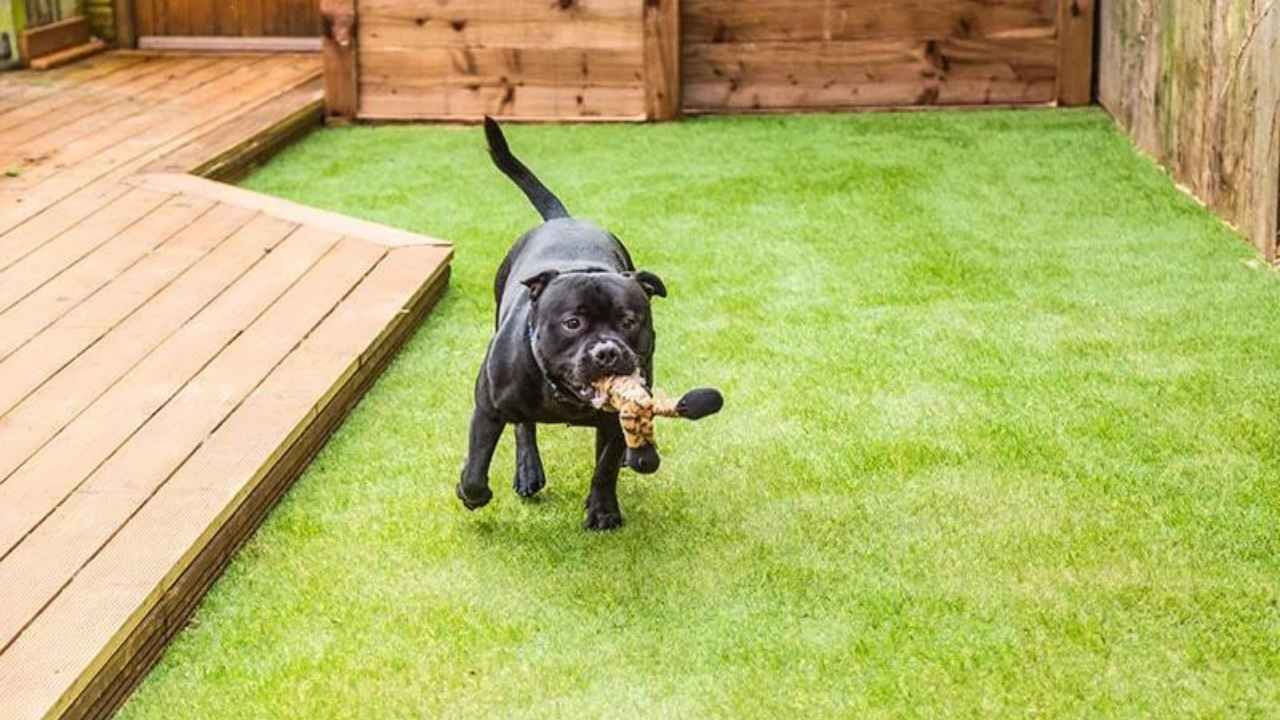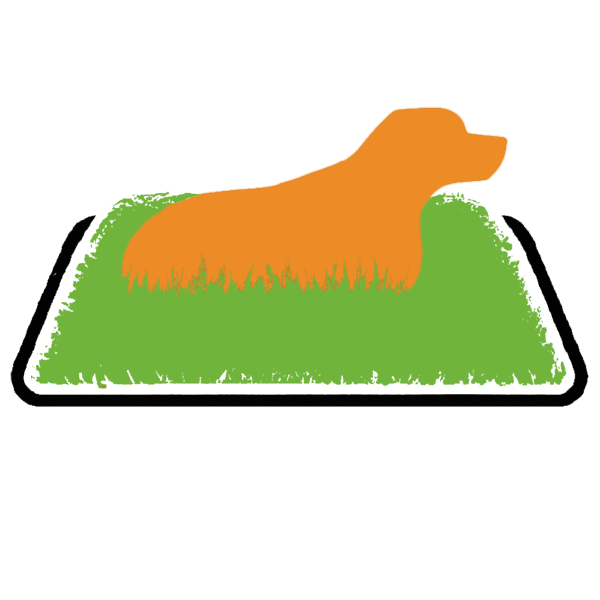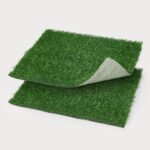Proper hygiene habits are essential for our beloved canine companions’ overall health and well-being. As responsible pet owners, we must ensure our dogs maintain good hygiene. One convenient solution recently gaining popularity is using dog grass pee pads. These pads offer a practical and efficient way to address the potty needs of our furry friends, particularly in indoor or limited-space environments.
This blog post aims to provide valuable insights and skills for dog owners on correctly using dog grass pee pads. Additionally, we will explore effective training methods to teach dogs to use designated areas for their potty needs. By implementing these techniques, you can establish good hygiene habits in your furry friend and ensure a clean and comfortable living environment for you and your pet.
So, let’s delve into the dog grass pee pads world and discover the skills and training methods to help you and your canine companion embrace a hygienic and harmonious lifestyle.
Understanding Dog Grass Pee Pads
Dog grass pee pads are innovative and convenient alternatives to traditional potty solutions for dogs. These pads are designed to simulate outdoor grass, providing a natural and comfortable surface for your furry friend to relieve themselves. Understanding the basics of dog grass pee pads is crucial before delving into their proper usage and training.
Dog grass pee pads offer a multitude of benefits for both pet owners and their canine companions:
- They provide a designated area for your dog to eliminate, which can be particularly advantageous when access to outdoor spaces is limited or during inclement weather.
- They help maintain your home’s cleanliness, as the pads absorb urine and control odors.
- Dog grass pee pads can be a practical solution for pet owners with mobility issues or living in apartments or high-rise buildings.
When selecting the right dog grass pee pad, it is essential to consider a few factors. First, evaluate your dog’s size and breed, as this will determine the appropriate pad dimensions. It should be spacious enough for your dog to stand and move around comfortably. Additionally, consider the absorbency level of the pad, especially if you have a more giant or active dog. High absorbency is crucial to prevent leaks and keep the surface dry.
Furthermore, take into account the material and quality of the grass-like surface. Opt for pads with a realistic texture, which will help train your dog to associate the pad with outdoor grass. Some pads even incorporate antimicrobial properties to prevent the growth of bacteria and ensure a hygienic environment.
Lastly, consider the longevity and durability of the pad. Look for options resistant to tearing and can withstand regular use without losing effectiveness. While the initial investment may vary depending on the quality and features, choosing a reliable and durable dog grass pee pad will be worthwhile in the long run.
By understanding the benefits and selecting the right dog grass pee pad for your furry friend, you are laying the foundation for successful potty training and establishing good hygiene habits.
Factors to Consider | Description |
Dog’s size and breed | Determine appropriate pad dimensions |
Absorbency level | Choose based on dog’s size and activity level |
Material and quality | Opt for realistic texture and antimicrobial properties |
Longevity and durability | Select pads resistant to tearing and wear |
Setting Up a Designated Pee Pad Area
To effectively train your dog to use a dog grass pee pad, setting up a designated area conducive to their needs is crucial. Whether you place the pad indoors or outdoors, creating the right environment is critical to successful training and establishing good hygiene habits.
Start by selecting an appropriate location for the pee pad area. If you decide to keep it indoors, consider a spot easily accessible for your dog and away from high-traffic areas. It could be a laundry room, bathroom, or any other secluded space allowing privacy during potty breaks. Alternatively, if you opt for an outdoor area, choose a quiet corner of your yard that provides security and minimizes distractions.
Once you have chosen the location, it’s time to create a defined space for the designated area. Use barriers or pet gates to enclose the area and prevent your dog from wandering off or accessing other parts of the house or yard. This enclosure will help your dog understand the boundaries and associate the area with their potty needs.
It is essential to ensure that the designated pee pad area is easily accessible for your dog. If it is indoors, make sure there are no obstacles or stairs that could hinder their movement. For outdoor setups, ensure that the area is easily reachable without any blocks or hazards that could cause discomfort or pose a risk to your pet’s safety.
In addition, consider the size of the designated area. It should be spacious enough to accommodate your dog comfortably while allowing them to move around freely. Dogs prefer to have space to sniff and explore before finding the right spot to relieve themselves.
By carefully selecting an appropriate location, creating a defined space, and ensuring easy accessibility, you set the stage for successful training and establishing a consistent routine for your dog’s potty needs.
Training Your Dog to Use Pee Pads
Training your dog to use grass pee pads requires patience, consistency, and positive reinforcement. Following a structured approach, you can effectively teach your furry friend to associate the designated area with their potty needs, establishing good hygiene habits.
- Establishing a consistent routine for potty breaks: Dogs thrive on routine, so it’s essential to set a consistent schedule for potty breaks. Take your dog to the designated pee pad area regularly throughout the day, especially after meals, playtime, or nap. Consistency in timing will help your dog anticipate and understand when it’s time to eliminate.
- Introducing your dog to the designated area: Initially, teach your dog to the designated pee pad area on a leash. Allow them to explore the area and sniff around. Please encourage them to step onto the pad and praise them for doing so. Familiarize your dog with the scent and texture of the grass-like surface by gently patting it or walking on it yourself. This will help them associate the pad with their instinct to eliminate the grass.
- Using positive reinforcement techniques to encourage desired behavior: When your dog uses the pee pad correctly, provide immediate praise, treats, and affection as favorable reinforcement. Positive reinforcement strengthens the association between the desired behavior and the reward, making your dog more likely to repeat it. Consistency and timely rewards are vital in reinforcing the desired potty habits.
- Patience and consistency in training your dog: Training takes time and patience. It is usual for your dog to have accidents during the training process. Avoid scolding or punishing your dog for accidents, creating fear or anxiety. Instead, focus on redirecting them to the designated area whenever accidents occur, and reward them when they use the pad correctly. Consistency in training and a positive, patient attitude will yield better results.
By establishing a consistent routine, introducing your dog to the designated area, using positive reinforcement techniques, and maintaining patience and consistency, you can effectively train your dog to use dog grass pee pads. With time and practice, your furry friend will develop good hygiene habits and confidently utilize the designated area for their potty needs.

Correct Usage of Dog Grass Pee Pads
It is essential to follow proper usage guidelines to ensure the effectiveness of dog grass pee pads and maintain good hygiene habits. This section will cover critical aspects such as placement, teaching your dog the purpose of the pad, maintenance, and dealing with accidents.
- Placing the pee pad in the designated area: Position it in the designated area, ensuring it covers a sufficient space for your dog’s needs. Secure the pad in place to prevent shifting or movement during use. Ensure that the pad is easily accessible and visible to your dog, making it clear that it is the designated area for eliminating.
- Teaching your dog to recognize the purpose of the pad: Initially, supervise your dog closely when they are on the pad. If you notice signs they need to eliminate, such as sniffing or circling, gently guide them to the pad. Please encourage them to use the pad by using verbal cues or commands. When they successfully eliminate on the pad, provide positive reinforcement and reward them. Over time, your dog will learn to associate the pad with their potty needs.
- Regularly replacing and maintaining the pee pad: Dog grass pee pads should be replaced periodically to maintain cleanliness and hygiene. Follow the manufacturer’s instructions for recommended replacement frequency. Additionally, clean the pad regularly by removing solid waste and using pet-friendly disinfectants or cleaning solutions. This will help prevent odors and maintain a fresh environment for your dog.
Dealing with accidents and reinforcing proper usage: Accidents may occur during training. If your dog has an accident outside the designated area, avoid punishment and clean the area thoroughly to remove any lingering scent. When accidents happen on the pad, avoid scolding and instead redirect your dog’s attention to the pad and encourage them to use it correctly. Reinforce proper usage by providing praise and rewards whenever your dog eliminates on the pad.
Consistency, patience, and positive reinforcement are essential throughout the training process. With time and practice, your dog will become accustomed to using the dog grass pee pad correctly, reinforcing good hygiene habits and making it a reliable solution for their potty needs.
Establishing Good Hygiene Habits
Establishing good hygiene habits in your dog is crucial for their overall well-being and the cleanliness of your living space. This section will cover important aspects such as consistent rewards and praise, reducing the size of the pee pad, transitioning to outdoor potty training, and maintaining cleanliness in the designated area.
- Consistently rewarding and praising your dog for using the pee pad correctly: Throughout the training process, continue to provide consistent rewards and praise whenever your dog uses the pee pad correctly. Positive reinforcement strengthens the desired behavior and motivates your dog to continue using the designated area. The more consistent and enthusiastic you are with rewards and praise, the quicker your dog will develop good hygiene habits.
- Gradually reduce the size of the pee pad as your dog becomes more reliable: As your dog becomes more reliable in using the pee pad, gradually reduce its size. Start by cutting a small portion of the pad and continue to do so until your dog is comfortable using a smaller area. This step helps your dog generalize the behavior of using a specific spot for elimination, even when the space is reduced.
- Transitioning to outdoor potty training, if desired: If you want your dog to eliminate outdoors, you can gradually transition from using the pee pad indoors to outdoor potty training. Move the pee pad closer to the door, then slowly shift it outside. Introduce your dog to the new outdoor spot and encourage them to eliminate there. Remember to provide ample opportunities for your dog to go out for potty breaks and continue using positive reinforcement to reinforce the desired behavior.
- Tips for maintaining cleanliness and hygiene in the designated area: To maintain cleanliness in the designated area, consider the following information:
- Clean the area regularly: Remove solid waste promptly and clean the pee pad or surrounding area regularly using pet-friendly disinfectants. This helps control odors and keeps the space fresh.
- Monitor and replace soiled pads: Keep an eye on the pee pad and return it whenever it becomes heavily soiled or loses its absorbency. Regular replacement ensures a clean and practical surface for your dog to use.
- Use odor-neutralizing products: Consider sprays or products specifically designed for pet urine odors. These can help eliminate lingering smells and keep the designated area fresh.
- Practice good hygiene: Wash your hands thoroughly after handling waste or cleaning the designated area. This helps prevent the spread of bacteria and maintains a hygienic environment for you and your dog.
By consistently rewarding and praising your dog, gradually reducing the size of the pee pad, considering outdoor potty training, and maintaining cleanliness and hygiene in the designated area, you can establish good hygiene habits for your furry friend. These habits ensure a clean and pleasant living environment and contribute to their health and well-being.
In conclusion, using dog grass pee pads and implementing proper training methods are effective ways to establish good hygiene habits in dogs. By understanding the benefits of dog grass pee pads, setting up a designated area, and employing positive reinforcement techniques, you can successfully train your dog to use the pee pad correctly. Remember to be patient and consistent and reinforce desired behavior. As your dog becomes reliable, you can gradually reduce the pad size or transition to outdoor potty training if desired. By following these guidelines and maintaining cleanliness in the designated area, you can create a hygienic environment and ensure the well-being of your furry friend. Embrace these skills and training methods to foster good hygiene habits and enhance the bond between you and your dog.

Conclusion
In conclusion, training dogs to use pee pads correctly requires patience, consistency, and positive reinforcement. Following the outlined skills and training methods, you can establish good hygiene habits for your furry friend, ensuring their well-being and convenience.
Patience is critical throughout the training process. Dogs may have accidents initially, but with time and practice, they will learn to associate the designated pee pad area with their potty needs. Consistency in establishing a routine, introducing your dog to the designated area, and using positive reinforcement will reinforce the desired behavior.
Positive reinforcement, such as praise, treats, and affection, plays a vital role in training. By consistently rewarding and praising your dog for using the pee pad correctly, you strengthen the association between the desired behavior and the reward, motivating your dog to repeat the behavior.
Establishing good hygiene habits is not only beneficial for your dog but also for your convenience. Dog grass pee pads offer a convenient solution, mainly when outdoor access is limited or during inclement weather. Training your dog to use designated areas creates a clean and hygienic environment within your home or outdoor space.
It is essential to emphasize the importance of establishing good hygiene habits for your pet’s well-being. Maintaining cleanliness in the designated area, regularly replacing and maintaining the pee pad, and practicing good personal hygiene contribute to a healthy and pleasant living environment for you and your furry friend.
By embracing the skills and training methods discussed in this blog post, you can ensure your dog develops good hygiene habits and becomes comfortable using pee pads in designated areas. Remember, training takes time, so be patient and consistent. With dedication and positive reinforcement, you can establish a routine that promotes cleanliness, convenience, and the overall well-being of your beloved pet.
So, take the first step, set up a designated area, and embark on this rewarding journey of training your dog to use pee pads correctly. Your efforts will pay off as you witness your dog’s successful transition and the establishment of good hygiene habits that will benefit both of you for years to come.



